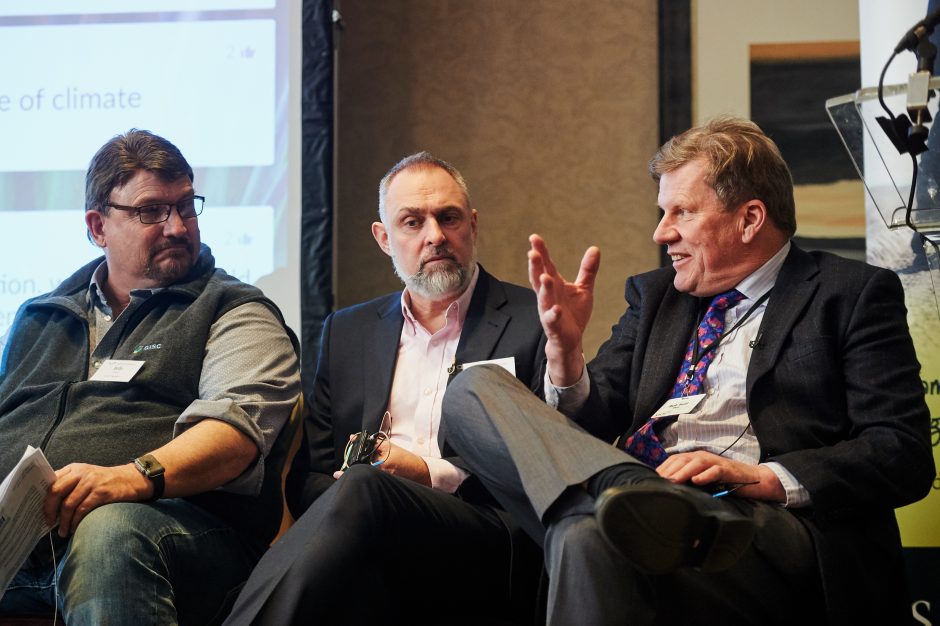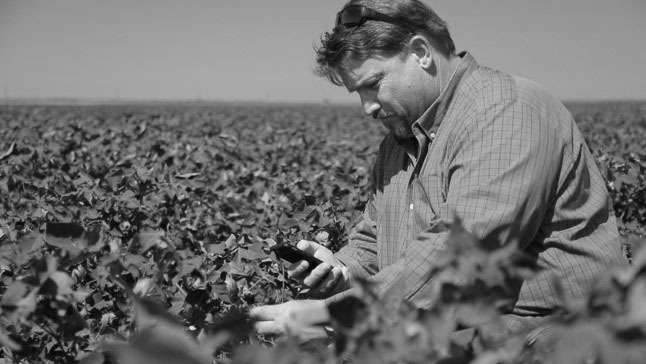Farm data is becoming more important in the face of growing commercial and environmental pressures – and this data is most effective when shared under a co-operative model, an industry conference was told.
The Scottish Agricultural Organisation Society (SAOS), which represents the country’s agri-co-ops, focused on the issue at its annual conference in Dunblane in January, with a series of expert presentations.
Chief executive Tim Bailey warned delegates that agriculture faced serious “headwinds” with an increasing need for skilled labour, consumer demand for cheap food, and the climate emergency. But there is also a huge global market and Scottish farmers have the advantage of a reputation for quality produce, he said.
“We can’t just sit back and see what happens,” he said. “We must overcome barriers to working together, to co-operation. There is still a perception that the power of one is power when this isn’t power at all … collectivism is real power.”
This applies to data as much as to anything else, he said. Billy Tiller, from the Growers Information Services Co-op (GiSC), illustrated just this. Based in Texas, with operations across the USA, GiSC is the world’s first aggregated data co-op.
“One person’s data isn’t worth a lot,” said Mr Tiller, a cotton farmer. “But when you put it together it means you can aggregate and benchmark.”
He said farmers could use data to gain more power in the supply chain and value chain, because currently, what consumers spend on food trickles down to producers “as pennies”.
“How do you get a bigger piece of that supply chain money? We own the keys to the castle … we need to be the disruptors, to change the game, to be proactive.”
He advised farmers to keep things simple. “Pick a task and stick to it. And if you can’t make money off a tool, don’t take it. The only goal is finding solutions.”
To help them do this, GiSC has created a cloud-based data repository, which means members have connectivity and can access that data on their phones while out on the farm; it has drop-down menus for the inputting of data to keep things standardised and simple.
“We had to convince farmers cloud was safe from hackers.,” he added. “Transparency is important. Farmers need to trust you. “
To address this, Mr Tiller was part of a group that set up Ag Data Transparent, an organisation which verifies and certifies compliance with a series of core principles that ag tech providers should follow when collecting, using, storing, and transferring farmers’ ag data.
GiSC also helps farmers collect data – vitally important in states like Nebraska, where the state owns the water table and can stop farmers from taking groundwater if it affects river flow. Corn farmers in the state use 3,000 electrical wells irrigate their crops – which needs a lot of water to grow. To help farmers demonstrate compliance, GiSC is using smart meters and other data monitors to measure water use.

George Noble, project manager at SAOS, also stressed the need to aggregate data – but also to make good use of it. “We are drowning in data,” he said. “The trick is being able to organise ourselves as an industry to work that data. It requires deep levels of collaboration.”
Ideally, data capture should be automated to save farmers from having to enter reams of information and should be portable and shareable – which is not always the case if it is locked into a specific platform like Amazon or Google.
There are also problems of poor mobile and broadband access in remote parts of Scotland, and skills challenges. SAOS is working on solutions to this, said Mr Noble, who also set out a series of principles for data.
– Collaboration and co-operation are essential for good data use
– Farmers should own their data
– A farmer-first approach should be taking on collecting data and system design
– Real time data insights are important
– Partnerships with industry, government and stakeholders are important
– It is important to build trust with the farmer base.
Put into practice, this can help with livestock traceability – improving efficiency, helping to eradicate disease, and demonstrate provenance. Using a multi-agency approach, SAOS has worked with the National Farmers Union, the government and abattoirs and has almost completely eradicated the disease BVD from Scottish cattle.
Similarly, it is working with the Forestry Commission to use data on soil, woodland, livestock and energy use to quantify the contribution of farmers to mitigating climate change.

Paul Lindop, director of SmartRural, a co-op that provides digital services to rural areas, said the organisation is working to give Scottish farmers “appropriate and actionable data”.
Now a member of SAOS, SmartRural will launch as a user-owned co-op this year and aims to put a national network in place to enable data to flow and deliver value. This will include off-grid services for remote areas – a programme backed by the social media campaign #nowherestoorural.
Key areas of data include soil moisture and temperature, weather stations, the distribution of temperature and humidity in grain stores, silage effluent traps, irrigation and water trough levels, and fuel use and travel time for vehicles.
Related: Agriculture award for former SAOS chief James Graham
Also speaking was Anna Woodley, head of sales at Agrimetrics, which offers agri data services, said she wanted to make data accessible and easier to implement throughout the supply chain.
She said one problem is that farmers are producing more data than ever but while some of this is valuable, some is not, and it is hard to tell what is good and bad when information is located in different silos – with some farms storing information on five separate systems.
But with businesses enjoying up to 25% better gross margins if they use data properly, the incentive to improve is clear, she told delegates.